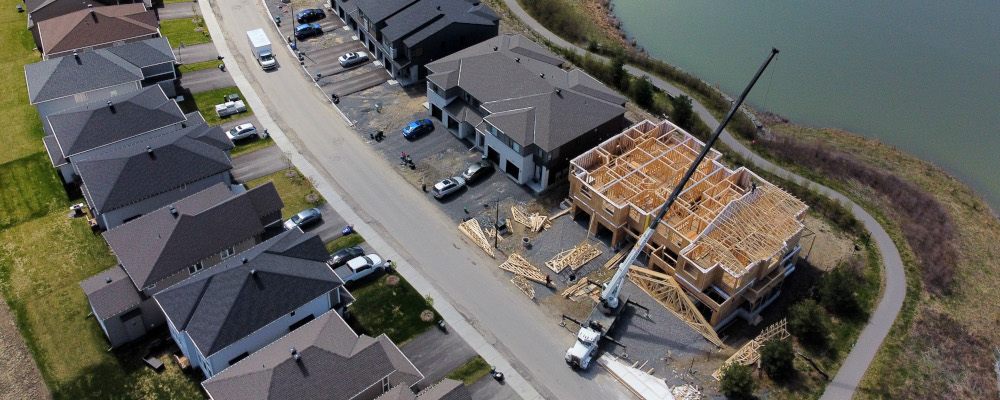Within the variety and volume of pieces The Hub has published on housing, the following theme has seemed to emerge: municipal governments are the most responsible for housing; while provincial governments have a political incentive to engage but little to offer, and; that the federal government also has a political incentive to engage, but even less to offer.
The principle of subsidiarity—that when the government is needed, programs are best delivered by the lowest level of government that can meet that need—has been used to validate this theme and drive policy suggestions that concentrate both the problem and apparent solutions in the hands of municipalities.
I too am a fan of the principle of subsidiarity. But in the context of housing policy, I think it has been applied in a rather one-dimensional fashion that has constrained the creativity of conservative-minded policy thinkers. This constraint has produced policy suggestions that municipalities have little to no incentive to enact, or suggested interventions by higher orders of government that could easily be contested or enrage intergovernmental relations.
The principle of subsidiarity, however, can allow for multiple levels of government to be engaged in the same policy issue area while allowing each to bring an expertise, satisfy a particular responsibility, or offer a unique resource. In this way, subsidiarity can and often should be multi-dimensional.
Subsidiarity, after all, should not be conflated with rightly ordered federalism. Subsidiarity is not ultimately a legal principle, but rather a moral-social principle in that its ultimate aim is the flourishing of the human person.
The Ford government’s most recent proposed legislation on housing demonstrates that multiple levels of government have particular responsibilities toward housing. The proposed legislation would, among other things, curtail the misuse or even abuse of housing regulations and planning authorities by municipalities, namely development charges, off-site levies, and parkland fees, all of which add hundreds of thousands of dollars onto the bottom line of new homes.
This bold approach reminds us that provincial governments actually have a particular and unique responsibility in housing governance: to protect their constituents from short-sighted regulatory regimes that curtail economic prosperity and social advancement through thoughtful policy design and a fair regulatory environment. This is the second dimension of a multidimensional approach to subsidiarity.
The third dimension of this multidimensional approach is the role of the federal government. This is perhaps where the mindset of one-dimensional subsidiarity has most constrained policy creativity and, in some cases, produced harmful federal policies on housing. In favour of localism, current federal policies have almost exclusively engaged the demand side (e.g. First Time Home Buyers Incentive or the new Tax-Free First Home Savings Account) or simply been performative (e.g. a ban on blind bidding, a house flipping tax, or a homeowners bill of rights).
One of the more popular policy ideas suggested by those of a conservative disposition has been the tying of federal infrastructure funding to housing densification. Sean Speer and Brian Lee Crowley suggested this back in 2016, it was in Erin O’Toole’s platform in 2021, and was more recently advocated for by both Pierre Poilievre and Scott Aitchison in their leadership bids.
Realistically, this is the weaponization of the federal spending power, which although blunt in its character, has become more popular as a federal policy tool (but this doesn’t mean it’s a healthy form of federalism). Nonetheless, the prominence of this policy idea should remind us that a particular order of government may be most responsible for, or closest to, a policy issue that they are also sometimes the least likely to act on, or have the least incentive to do so.
But let’s turn this idea on its head—what can the federal government do with its wealth of funding to incent homebuilding and densification? Rather than dictate, what could be done through partnership and the sharing of resources?
The federal government could step in and help to reduce the bottom-line cost of homebuilding by establishing a grant program available to municipalities and designed to cover some of the most costly regulatory fees associated with homebuilding. For example, development charges and off-site levy fees are assessed by municipalities to maintain and build community infrastructure (e.g. sewers, wastewater treatment, sidewalks, highway on-ramps, local schools, libraries, and sports facilities) could be covered. While its common practice that developers pay to construct all the necessary infrastructure for a new development, like roads and sidewalks, they also are required to pay these fees to aid the municipality in managing and responding to the increased demand on and for community infrastructure.
The federal government should recognize these aspects of homebuilding and community growth as traditional infrastructure—as it does highway overpasses, interchanges, or road widening—and fund it as they do other infrastructural projects. Namely, through cost sharing which is often done in partnership with the province.
This could make a noticeable impact on the current cost of homes. According to a C.D. Howe Institute report, in 2020 it was estimated that municipal housing charges and taxes in Vancouver can result in an extra cost of up to $644,000 for the average new house. While in other major cities across the country home buyers paid an average of $230,000 extra.
While the infrastructure associated with these charges is necessary for communities to comfortably grow and function, the question is who is best situated to fund their construction. Municipalities have long thrust this on to developers who have pushed the cost onto homebuyers, which has continually increased the cost of homeownership.
With the help of the federal government, there is a better economy of scale to be had. While developers pass the cost on to a small segment of the economy, namely homebuyers, the federal government could distribute the cost across the entire tax base of the country, as it does with its usual infrastructure spending.
But should all taxpayers help to fund community infrastructure across the country? I say yes. These are public goods that are enjoyed indiscriminately by the local community at large, not just the new homeowners in the newly constructed subdivision or tri-plex.
Rarely has it been controversial for the federal government to use tax dollars towards local community infrastructure projects (e.g. a hockey arena, overpass, wastewater treatment, etc.) in some town you will probably never visit in a province on the other side of the country from you. In our communities, we all have access to public goods that are funded by all Canadians. Housing infrastructure should be no different.
This policy suggestion far surpasses those that call on municipalities to pause or waive their charges on new home construction at their own initiative (they have little to no incentive to do so, anyhow), or for provinces to mandate this via legislation. It’s necessary to go further because a pause or reduction will likely just delay the building of community infrastructure or make it prohibitively expensive to do so. Someone, at the end of the day, needs to pay for community infrastructure. The cost of affordable housing shouldn’t be a lack of community infrastructure.
The federal government could support such a grant program without any net new spending by reallocating current infrastructure and housing spending. Specifically, federal funding allocated to the Canadian Infrastructure Bank and the National Housing Strategy could be utilized. While these two programs are exceptionally well funded they have woefully underperformed, as found by studies of the Parliamentary Budget Office, Office of the Auditor General, and the Standing Committee on Transport Infrastructure and Communities. It’s shameful to have a “housing strategy” with an annual budget of $3.7 billion that isn’t making any meaningful difference on the supply side.
The one-dimensional application of subsidiarity to housing has too often led to circular policy debates and buck-passing. Multidimensional subsidiarity where each level of government shoulders its particular responsibility, offers its expertise, and expends its unique resource may actually solve this crisis by getting more homes built at a more affordable price point for everyday Canadians.
Recommended for You

‘Raised expectations very high’: Five takeaways on the Liberals and Conservatives’ strategies for Parliament this fall

‘$92 billion on the deficit’: What Carney and Poilievre need to do when Parliament reopens

Howard Anglin: Just how principled is Mark Carney?

DeepDive: Are the foundations of North American trade at risk? Forecasters fear for the future of CUSMA



